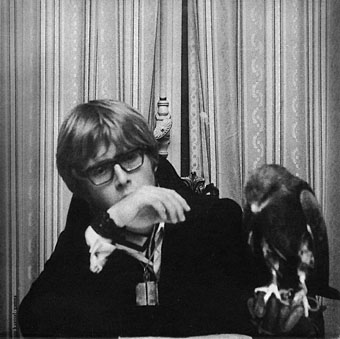
Igor Wakhévitch and feathered friend.
Continuing the Francophile theme, I felt that now was a good time to plumb the mysteries of the enigmatic Igor Wakhévitch. Who? Well… In 20th century music there’s strange and there’s weird and then there’s off-the-wall unclassifiable which is the place where we have to file Igor’s compositions. After half a lifetime spent trawling record shops for unusual music these albums had somehow managed to remain off the radar until a CD reissue set, Donc…, appeared courtesy of Fractal Records and a friend with similarly outré tastes (hi Gav!). The obscurity of these remarkable recordings can’t solely be due to Monsieur Wakhévitch being French; Richard Pinhas, Bernard Szajner and (of course) Magma, have been given enough attention over the years.
So what does this stuff sound like? Thankfully the redoubtable Alan Freeman tackled the problem of describing the albums in Audion (reproduced below), a task I would have found rather daunting. Docteur Faust is probably my favourite, a crazily eclectic and doomy album which lurches from rock freakout to contemporary orchestral/choral to electro-acoustics and back again. Imagine the witch cult from Rosemary’s Baby jamming with Alpha Centauri-era Tangerine Dream while Peter Maxwell Davies and Amon Düül 2 slug it out in the background. The clincher is a great cover by French comic artist Philippe Druillet.
One other notable album that the Donc… collection omits is the 1974 recording of Salvador Dalí’s opera, Être Dieu. Dalí wrote the libretto in 1927 with Federico Garcia Lorca but the piece wasn’t recorded until Wakhévitch provided a score. The result is pretty much the same as Wakhévitch’s other work, with the added bonus of the Surrealist master declaiming and frequently shrieking over the music.
For more information about Donc… and Igor Wakhévitch see the Fractal Records review page.
Alan Freeman reviews Donc…, Audion 40, August 1998
Donc… innovation!
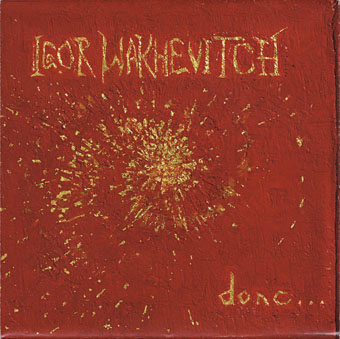
An unclassifiable talent, Igor Wakhévitch could be seen as the French equivalent of someone like Ralph Lundsten, or an explorer like Franco Battiato, a pioneer who proliferated in the Seventies with a series of highly original and unusual albums.
Igor Wakhévitch’s roots are obscure, though his name implies he is obviously of Russian ancestry, and apparently his father was a celebrated theatre set-designer. It was obviously in the setting of the theatre that Igor Wakhévitch saw new potentials in music. He was something of a genius as a young musician. By the age of 17 he had already won the first prize for piano at the Superior Conservatoire in Paris. But, not content to stay in the classical world, he moved on. His academic qualifications served him well. In 1968 he was working at the Groupe de Recherches Musicales (then directed by Pierre Schaeffer) with access to some of the most advanced studio equipment around. There he learnt his craft as a sound designer, as a master of studio trickery and musique-concrète techniques. The perfect foil for his own musical talents, and as a way to play with the possibilities of sound and other musical forms. This fertile environment, at studios that were regularly visited and/or used by the likes of Pierre Henry, François Bayle, Bernard Parmegiani, et al, was the ideal springboard for the creation of a new form of music.
Pierre Henry had already become celebrated for his works combining rock and electronics in the early part of the Sixties, and particularly his music for the avant-garde ballets of Maurice Béjart. Igor Wakhévitch saw this as his oeuvre, being fascinated by the new forms of psychedelic rock that were making shock-waves in France. With the moniker “Ballet for the 21st Century” he worked with Béjart in an attempt to turn this underground pop culture into high art. Inspiration came from Soft Machine and Pink Floyd, and in fact Igor Wakhévitch worked quite extensively with Robert Wyatt and Soft Machine for a while.
At this time, Igor Wakhévitch also worked together with Terry Riley learning special tricks about tape delays and looping techniques. All this experience melted into the pot of what became a unique music, with a focus that lay in processing instruments, usually in a melodic framework, blending in rock and diverse classical forms, bringing different unlikely musics together, often in most perplexingly odd ways. Igor Wakhévitch thus became established at Pathé Marconi Studios and also did production work for other studios and labels, and as a result got in touch with the French up-and-coming home-grown rock scene. The seeds were set for a radical and unique new form of music.
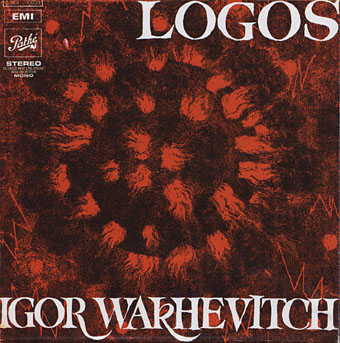
Logos (Rituel Sonore) (1970)
With such a background, and a concept based on Greek legend, Logos (Rituel Sonore) amounted to a revolutionary creation for a 1970 release. Even if you know works like Pierre Henry’s The Green Queen, which was weirdly comprised of rock and avant-garde musics fused together, you’ll still be in for a surprise. Here we have a soprano singer, strange orchestral textures and percussives (drums, cymbals, gongs, etc.) blended with effects and processing. As the ominous percussion sets off with drum-rolls and ritualistic tension, the mood is of a looming anticipation of what is to come. here we go through phases of weird swirling effects, vivid reverb and atmosphere. The tension becomes overpowering, yet we are led on. Here we have the key to Igor Wakhévitch’s sound, in a tension that becomes awe-inspiring.
The climax of the whole opus comes with “Danse Sacrale”, an extraordinary psychedelic instrumental performed by Triangle (one of the earliest French psychedelic bands) that has to be heard to be believed. A great band in their early days, this goes to prove that Triangle were not just Pink Floyd cum Traffic copyists. This all amounts to a unique fusing of psychedelia and the avant-garde, and an awesome experience!
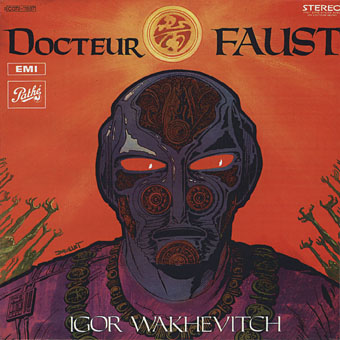
Docteur Faust (1971)
This is the most obscure album of the lot. I’d never hit it before this release. Aptly in tune with the title, it is also one of the strangest. Docteur Faust was created for a festival in Avignon, and was later choreographed. Though, the mind boggles as to how anyone could dance to this. “Full of fury and energy” to quote a reviewer at the Avignon festival, it certainly is!
On one hand this is a more balanced blending of classical and dramatic musics, yet also it is much more extreme. There’s a wealth of sonic collage, dense musique-concrète, and bizarre musics that collide and fragment against rock structures. There’s also moments of pure classical avant-garde moving into ensemble pieces feeling like Henze meets Ligeti or Xenakis. The use of electronics is really vivid too. There are no rules or boundaries in what makes up a Wakhévitch composition! The rock elements return throughout this album and, although not credited, I would guess that again Triangle members are featured. The guitar reminds of Alain Renaud, and percussion is quite distinctive, backed-up with weirdly treated organ. Although a short album, it is so engrossing and weird that it would be too-much if it were much longer.
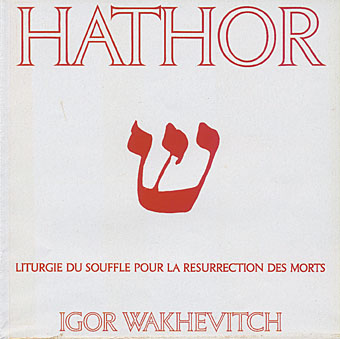
Hathor (Lithurgie du Souffle Pour la Résurrection des Morts) (1973)
Dating from 1973, shortly after working with Terry Riley on his Happy Ending soundtrack, there’s an obvious big advance in Hathor (Lithurgie du Souffle Pour la Résurrection des Morts), with greater use of keyboards, synthesizers, and looping techniques. But Hathor is no mere synth album, far from it, but is Igor Wakhévitch’s most powerful opus. Making use of the Paris Opera choir (no-less), along with weirdly processed vocals, his usual off-the-wall electronics, and even drum/sequencer drives unprecedented in any form of music before this. It’s another sonic roller-coaster ride, in which we experience an ominous bellowing God-like voice heralding something visionary.
As with his previous albums, Hathor contains a number of separate tracks that continue or segue from each other, amounting to what feels like one work. Here, we have surging electronic and percussion drives, a climax sparked off by lightning, thunder-crashes, a wealth of weird contorted voices, and much much more. Here tension gives way to intense power resulting in a kind of dark Vangelis—on the edge! With a weird Gothic choral number and another electronic rock opus to follow Hathor really flies! Only the closing coda offers relief, with a reflection on obvious Terry Riley influences, and hinting at the albums to come.
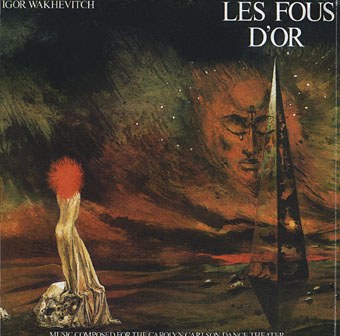
Les Fous D’Or (1975)
This is quite simply, the weirdest of the batch! Scored for ballets by the much celebrated avant-garde choreographer Carolyn Carlson. A big step away from rock, this album is the challenging start to the second phase of Igor Wakhévitch’s career. A very avant-garde opera in parts, starting with a warbling soprano and cello, you’d never guess where this album is going to take you. Synthesizers (in looping patterns) take us close to the feel of Ralph Lundsten at this time, which is not so surprising as Ralph Lundsten had also worked with Carolyn Carlson. Tape collage is also used extensively, along with ritualistic horns (sounds like Jac Berrocal), waves of sonic slurry, and a total disregard for conventional musical continuity. Admittedly, it took a long while to really get into this one!
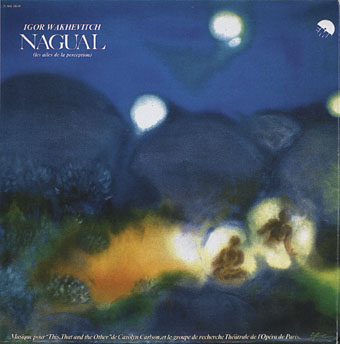
Nagual (Les Ailes de la Perception) (1977)
Although a concept in its own right, Nagual (Les Ailes de la Perception) again features music for a Carolyn Carlson ballet. Arguably, it’s the closest to Ralph Lundsten, as a largely cosmic work, with looping synthesizer patterns, putting melody against dissonance, moving on from the darker edge of the “new-age”. The format is different to all the previous albums, in that this has 12 tracks (ranging from 30 seconds to 8 minutes) and features musics unheard of within the Wakhévitch oeuvre before, like piano works of a weirdly construed type (reminding of Ron Geesin) and what feels like a bizarre Celtic jig amongst them. The mood is generally mysterious and enigmatic, largely based around cycling patterns of keyboards and other instruments. The range is very diverse and surprising. But, having said that, typically Wakhévitch it is—as an uneasy balance that’s engrossing—still so enigmatic and fresh!
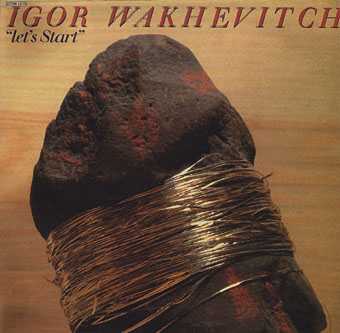
Let’s Start (1979)
This final album, from 1979, was created for the Batsheva Dance Company (for the festival of Jerusalem), and musically is the sum of many ideas from the two albums before, but in a more atmospheric framework. The grand opus here, the 21-minute “Let’s Start” itself, is a treat for those into the pioneering works of Terry Riley and Steve Reich in that this combines use of delay lines on keyboards à la Riley with phasing techniques on voices first explored by Reich. Not really systems music though, as the development of the work is not predictable, even the ending is a surprise where confused phrases organise themselves into a logical sentence! Extremely clever, indeed! The remaining works are Igor Wakhévitch at his most restrained and subdued, largely synth/keyboard based, and feel more like a hybrid of Deuter and Peter Michael Hamel, with a very film soundtrack type of feel.
As far as I gather Igor Wakhévitch sees Let’s Start as a return full circle to his roots, though such a progression or connection is hardly logical. There are characteristics and stylisms that one picks up on in Igor Wakhévitch music, but they are very hard to pin-down. Though I had heard rumour of other works, this seems to be his entire published oeuvre. It all amounts to a bizarre and fascinating trip with one of the true revolutionaries in new music, and a definitive set collecting it all together. The set is presented in a small red box, including a poster (with the album sleeves) and a 24 page booklet (in French, with a number of pictures), along with the 6 individually sleeved CDs. The original Igor Wakhévitch LP releases, despite being on major labels like EMI and Atlantic, are nowadays all pretty rare and collectable (most are reputedly worth £30+, with Docteur Faust reckoned to be worth £100).
Elsewhere on { feuilleton }
• The album covers archive

Good to see someone paying tribute to this amazing artist. Igor was one creative genius! I wonder why there seems to be no music by him from after the 70’s. Does anyone know what he did after this?
I’ve been wondering the same myself since hearing these albums. Scant information on the web. I think there may be a clue in the Donc… booklet notes but my French is too poor to see what they say.
http://www.teentaal.org/
Apparently, Igor Wakhevitch is now the director of Teentaal, the House of Indian Classical Music.
Hi Sam. Thanks for the info.
Thanks Sam for the info. I found it via a friend posting on my Facebook page! I’m glad Igor left the “pop” idiom and went on to better things…
A.